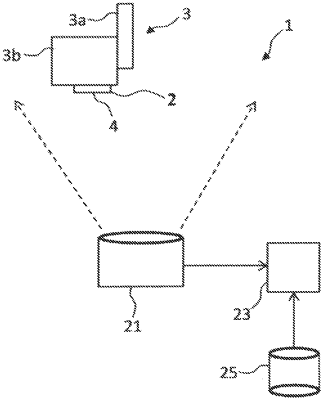| CPC G06T 7/001 (2013.01) [G01N 21/8806 (2013.01); G06T 7/11 (2017.01); G01N 2021/8845 (2013.01); G06T 2207/10004 (2013.01)] | 14 Claims |

|
1. A method for determining at least one of a position, a speed, and an acceleration of an object, the method comprising:
optically capturing at least one capture structure arranged at the object or at a reference object captured from the object and thereby obtaining capture information;
the at least one capture structure having a point-symmetrical profile of an optical property that varies along a surface of the at least one capture structure;
transforming a location-dependent mathematical function corresponding to the point-symmetrical profile of the optical property that is captured with the capture information into a frequency domain, such that a first frequency-dependent mathematical function is obtained;
forming a second frequency-dependent mathematical function from the first frequency-dependent mathematical function, wherein the second frequency-dependent mathematical function is formed from a relationship of in each case a real part and an imaginary part of complex function values of the first frequency-dependent mathematical function;
forming at least one function value of the second frequency-dependent mathematical function and determining the at least one function value as location information about a location of a point of symmetry of the location-dependent mathematical function;
determining the at least one of the position, the speed, and the acceleration of the object based on the location information; and
performing at least one of:
(1) controlling a movement of a movable part of a machine arrangement, and
(2) tracking a movement of the object, based on the at least one of the position, the speed, and the acceleration of the object.
|